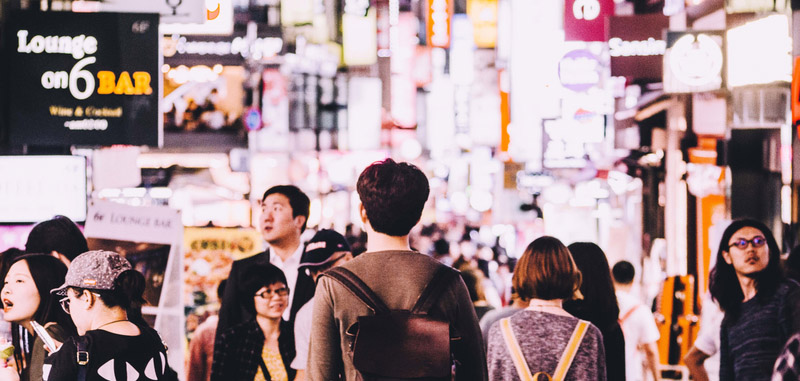There are quite a few good places to watch the seasons change in Seoul: Gyeongbukgung, Namsang Tower, and even Olympic Park, but the fall foliage aficionado will want to get out into Korea’s mountains. Most travelers don’t realize that pretty much all of the Korean peninsula is covered in a mountainous terrain just waiting to turn colors for fall. And, with Korea’s healthy (bordering on the unhealthy) obsession with hiking, trails, lifts, and switchbacks can easily get hikers to the peaks they want for the views they need.
Naejangsan
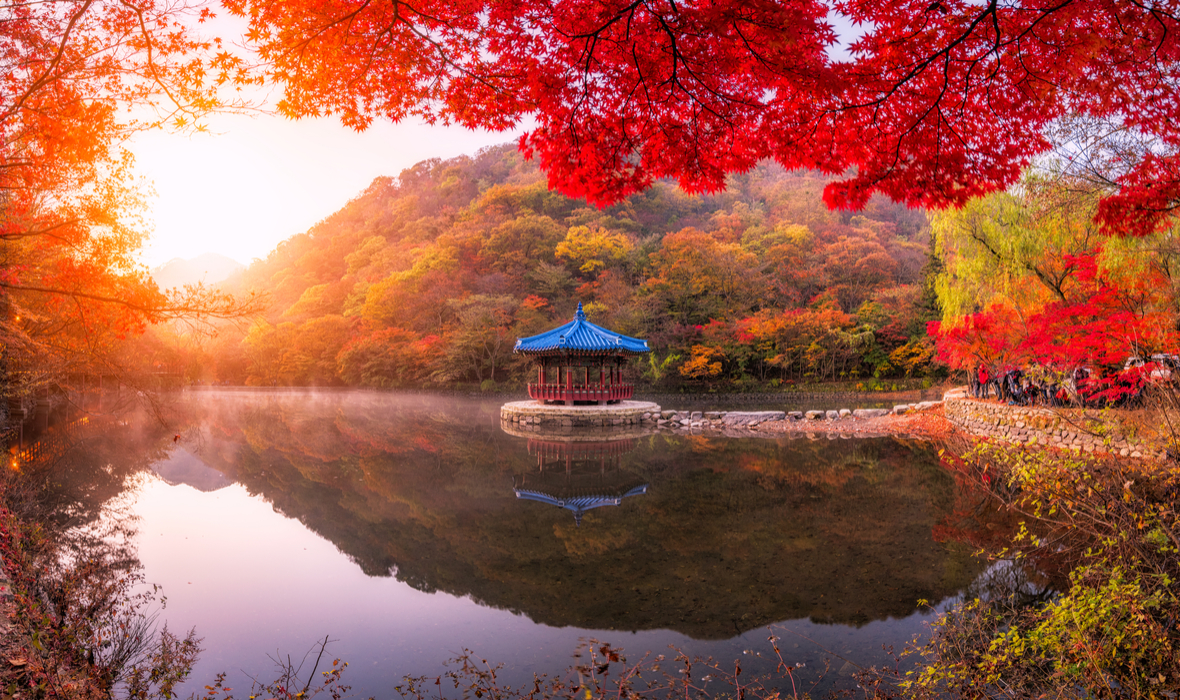
Located in Jeolla-do province, this area is one of the most popular locations to fully enjoy the colors of fall. Home to 800 species of plants with an abundance of maple trees which turn bright gold and red during the fall season, the “mountain of many secrets” is awash with lush vegetation.
On the journey up the mountain is the storied Baekyangsa Temple, built in the 7th century by King Wu. It lies at the base of the Ssangyeru peak to complement the lake under its multicolored umbrella of leaves during peak season.
Mudeungsan
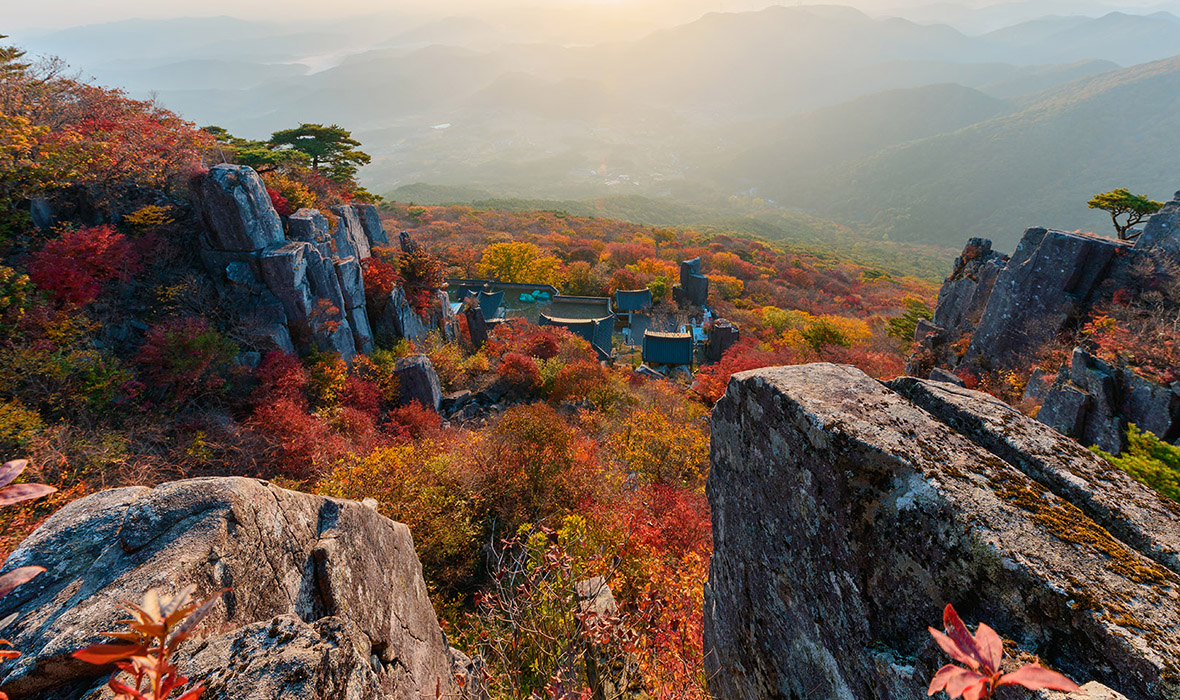
ABOVE: Gyubongam Temple, Mudeungsan National Park.
Auspicious Mountain, Rainbow Stone, and Holy Mountain are a few of the names attributed over the years to Mount Mudeung outside of Gwangju. Volcanic pillar stones dated between 4.5 and 8.5 million B.C.E. are a highlight of the trek as the contrast between stone and fall forestry bursts aloud. Several temples are respites along the trails through this national park, making for agreeable photography in the red maple trees. The trek up to Mudeungsan is approximately 2.5 hours and views down into the valley are well worth the relatively easy climb. Perched on the summit is the popular, historic Gyubongam Temple.
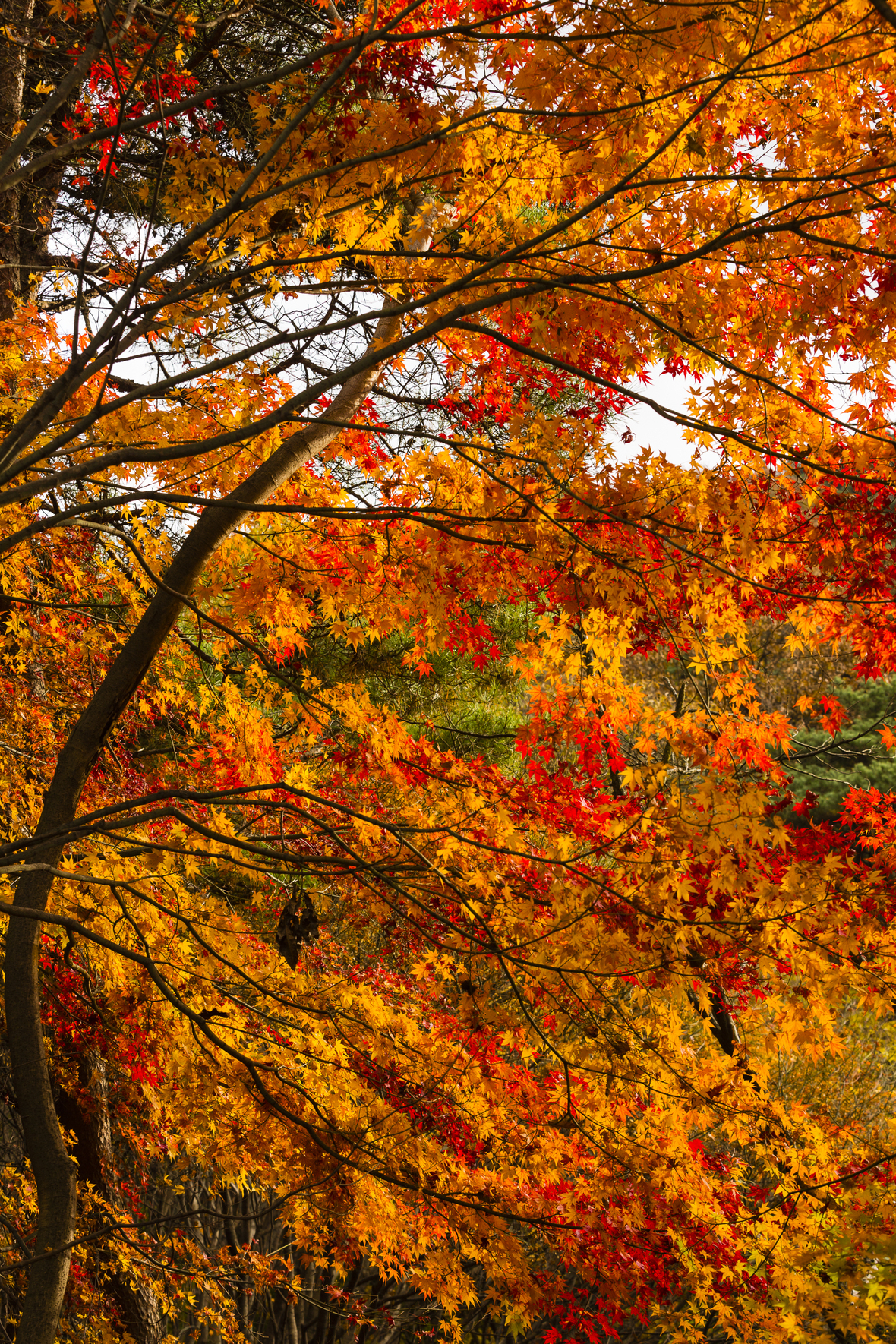
ABOVE: Tree in autumn colors in Mudeungsan National Park.
Throughout the day, the monks in residence will be chanting and the serenity is palpable. Spectacular rock formations surround the site which are broad and tall. Definitely not to be missed, the Gyubongam Temple and its mountaintop home have been romantically compared to a silk painting or a detailed jade engraving. ‘Eoksae’ grasses, translated in English as silver grass, are especially beautiful this time of year as they connect with the breezes in long and glowing splendor on Baekma Ridge. The Simujigi Waterfall is also a refreshing sight to see, especially when rainfall has revealed its triple rainbow effect.
Daedunsan

ABOVE: Daedunsan in fog and fall colors.
At 2,880 feet, the Daedunsan area is a place for both seasoned hikers and those who wish to experience the scenery from the comfort of a cable car. For the adventurous soul, the swaying suspension bridge called Geumgang Gureum spans across two peaks at 131 feet long and 984 feet to the valley below.
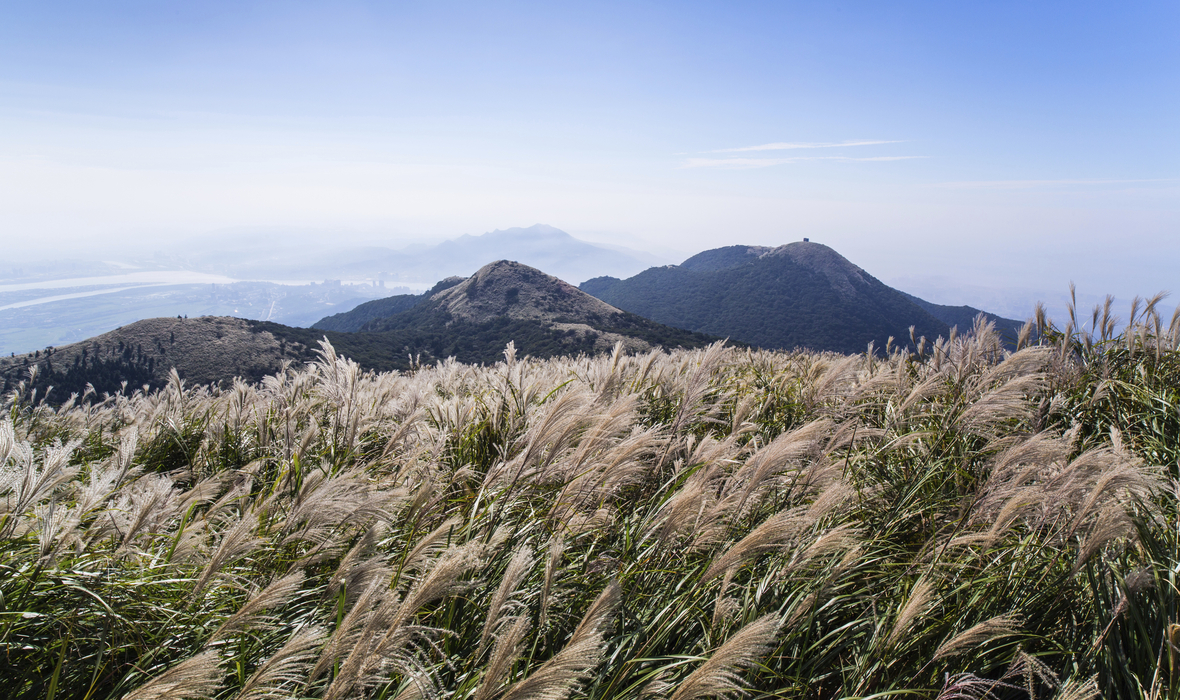
And not for the faint of heart, at the Samseon Overpass is a challenging walk up 127 feet of stairs at an angle of 70 degrees, hence its more common name of Cloud Bridge. Daedunsan is one of the more popular mountains in South Korea, so it’s best to start hiking very early in the morning before the cable car gets going and to get the best of the fog.
If you’re heading to Daedunsan right before fall, early in August the reed flowers begin to bloom leaving tracts of green mountain coated in surprisingly otherworldly scenes of the common reed.
Nami Island

ABOVE: For the non-hiker, Nami Island is a bucolic, park-like foliage scene.
Nami Island, or Namiseom, has a less dramatic history than the volcanic mountain forests elsewhere in Korea. It formed in the flooding of a lake after the building of a dam. Beside’s it’s park-like serenity and easy walk, Nami Island is known for being the romantic filming site of the Korean drama series, Winter Sonata (Gyeoul Yeonga).

ABOVE: Bright yellow maple trees in Nami Island.
It is drenched in the beauty of the season beginning in late October. Maple trees line the paths throughout and meeting up with a Korean chipmunk might not be so unusual, and there is an ostrich pen nearby for families to have a little gander.
Jirisan National Park

This park has one of the highest peaks in South Korea and one of the steepest for hikers. Fall is the best time for hiking the park’s rigorous trails for less rainy and humid weather. Seven Buddhist temples are located within the perimeter of this scenic park along with a variety of sights including waterfalls, places to rest and recharge, and rock formations to complement the scenery.
The Jirisan Ridge hike is one of the most grueling main hikes in Korea, around 60 kilometers and possibly over three days of tiring ascents, so travelers would be well advised to plan their journey beforehand.





